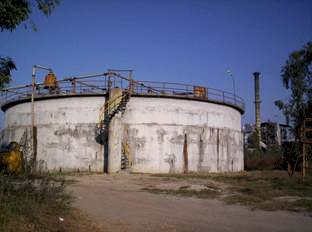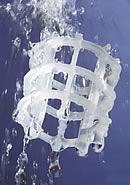

Trickling Filters An OnLine Primer Need to know more? Send us an email or feel free to search our online series with our give away search engine: |
Pure fixed-film processes, as used for industrial wastewater treatment,
generally take the form of towers, essentially tall trickling filters, containing a fixed plastic media having a
specific surface area of about 30 sq.ft./cu.ft. (100 m2/m3).
In this case, wastewater is dosed to the top of the tower using a fixed or
rotating distributor and trickles downward over the surface of the media.
Microorganisms attached to the media degrade the organic constituents of
the wastewater as it passes through the plug-flow reactor type
tower.
Advantages of fixed-film processes are their ease of operation and low power requirements. If topography is suitable one can operate the trickling filter without almost or no energy at all. Accumulation of microorganisms in the media bed provides the solids retention time necessary for treatment. The media may be washed occasionally to remove excess biomass.
Disadvantages include low loading rates and large reactor volumes, stripping of volatile organic chemicals, and release of odors. Flies and snails can also be a problem. Effluent quality may not be acceptable. For example, if a single stage, stone media trickling filter has a BOD removal of say 85 percent and we need to meet a 30 mg/L discharge, incoming BOD cannot be greater than 200 mg/L, Proper cold weather trickling filter operation may call for fiberglass covers.
Trickling filters built in the US over the past several years have been deep (8 +/- m) with high rate distributors. Trickling filters are OK for instances in which only roughing treatment is needed.
